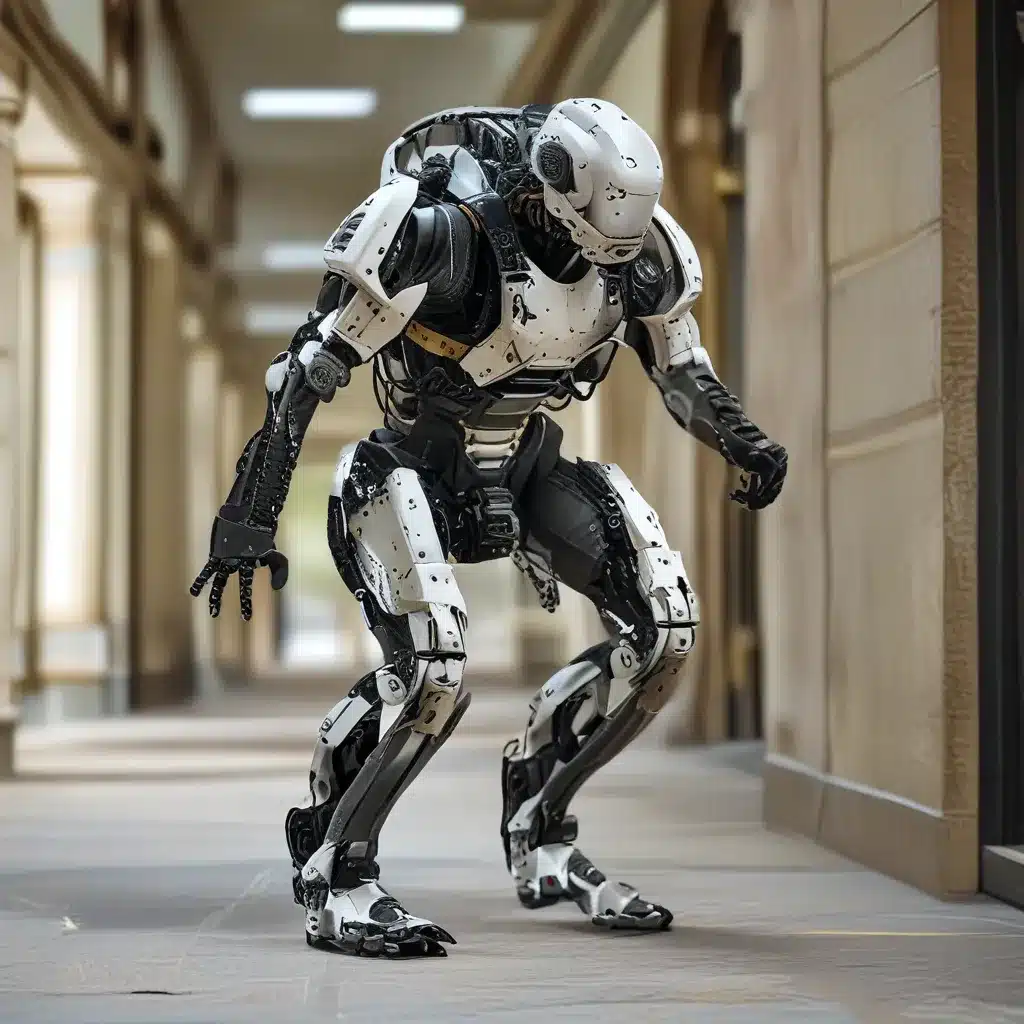As I step into the sturdy metal frame, I can’t help but feel a tinge of excitement mixed with a healthy dose of trepidation. This isn’t your average piece of tech – it’s an exoskeleton, a robotic suit designed to augment my strength and endurance. With a deep breath, I activate the system and feel the familiar whir of motors and servos as the exoskeleton comes to life, ready to tackle any challenge I throw its way.
The Rise of Exoskeletons
Exoskeletons have been the stuff of science fiction for decades, with visions of hulking, mechanized suits that grant their wearers superhuman abilities. However, what was once the realm of fantasy is now becoming a reality, thanks to the tireless efforts of researchers and engineers around the world.
One such pioneer is Professor Homayoon Kazerooni, the director of the Robotics and Human Engineering Laboratory at the University of California, Berkeley. As he explains, the goal of his team’s work is to “create an exoskeleton that combines a human control system with robotic muscle.” Their research has led to the development of a self-powered exoskeleton that can effectively “take the load off people’s backs.”
But the applications of exoskeletons go far beyond just alleviating physical strain. As the technology continues to evolve, we’re seeing a wide range of industries exploring the potential of these robotic suits, from military and industrial applications to medical and rehabilitation settings.
Strength and Endurance Unleashed
One of the most exciting aspects of exoskeletons is their ability to enhance the human body’s innate strength and endurance. Imagine being able to effortlessly lift and carry heavy loads, or to traverse rugged terrain without fatigue. This is the promise of these robotic suits, and it’s a promise that is rapidly being realized.
According to research published by the IEEE, exoskeletons can provide a significant boost to a wearer’s physical capabilities. By integrating sensors, motors, and advanced control systems, these suits can detect the user’s movements and provide the necessary assistance, effectively multiplying their strength and endurance.
For example, the exoskeleton developed by the UC Berkeley team is designed to be “ergonomic, highly maneuverable, and technically robust,” allowing the wearer to “walk, squat, bend, and swing from side to side without noticeable reductions in agility.” This means that users can navigate challenging environments, carry heavy loads, and perform physically demanding tasks with far greater ease and efficiency.
The Potential Applications
As the technology behind exoskeletons continues to advance, we’re seeing a wide range of potential applications emerge, each with its own unique set of benefits and challenges.
Military and Law Enforcement
In the military and law enforcement domains, exoskeletons are being explored as a way to enhance the capabilities of soldiers and first responders. Imagine a soldier carrying a heavy pack and weapon while navigating treacherous terrain – an exoskeleton could make that task exponentially easier, allowing them to conserve energy and focus on the mission at hand.
Industrial and Construction
In the industrial and construction sectors, exoskeletons are proving to be invaluable tools for workers tasked with repetitive, physically demanding tasks. Whether it’s lifting heavy materials, operating power tools, or performing maintenance on machinery, these robotic suits can reduce the strain on the human body and increase productivity.
Medical and Rehabilitation
Perhaps one of the most promising applications of exoskeletons is in the medical and rehabilitation fields. By providing physical support and assistance to individuals with mobility challenges, these robotic suits can help restore independence, improve quality of life, and accelerate the recovery process.
Overcoming the Challenges
Of course, the path to widespread adoption of exoskeletons is not without its challenges. These robotic suits are complex, expensive, and in some cases, can be cumbersome or difficult to use. Additionally, there are concerns around safety, privacy, and the potential impact on employment in certain industries.
However, as the technology continues to evolve and the benefits become more widely recognized, these challenges are being steadily addressed. Manufacturers are focused on designing more user-friendly, cost-effective, and reliable exoskeletons, while policymakers and industry leaders are working to ensure that the integration of these robotic suits is done in a responsible and ethical manner.
A Future Empowered by Exoskeletons
As I step out of the exoskeleton, I can’t help but feel a sense of awe and wonder. The sheer power and potential of this technology is truly remarkable, and I can’t help but imagine the countless ways it could transform our lives.
Whether it’s enabling first responders to rescue trapped victims, helping construction workers build towering skyscrapers, or restoring mobility to those with debilitating injuries, exoskeletons are poised to become an integral part of our lives in the years to come.
And as I walk away, I can’t help but feel a renewed sense of optimism for the future. After all, if we can harness the power of technology to enhance the human body, just imagine what else we can achieve. The possibilities are endless, and the future is ours to shape.
So, if you’ll excuse me, I think it’s time to suit up and see what else this exoskeleton can do. The adventure is just beginning, and I can’t wait to see where it takes me.













